This Week At Angama #82
30 August 2019 | This Week at Angama | Jeffrey Thige
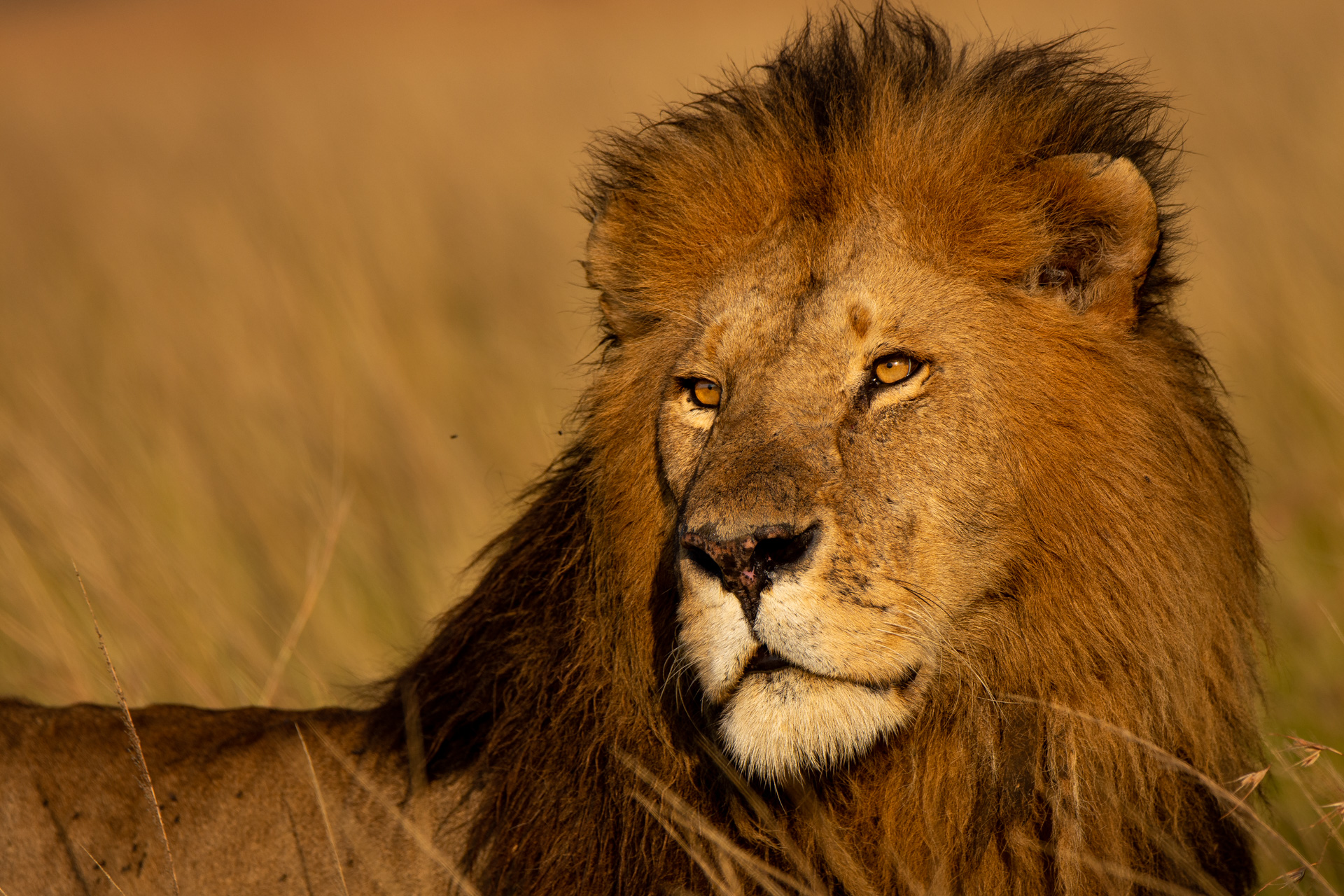
The core purpose of the Angama Photographic Studio is to teach people how to take better photographs. This includes our own guides. A few months ago, we started the Angama Photography Club; an intensive training course designed to turn our guides into better wildlife photographers. This week I had the pleasure of taking two guides – Lemaalo and Dougie – out for their practical classes. [f 6.0, 1/1000, ISO 250]
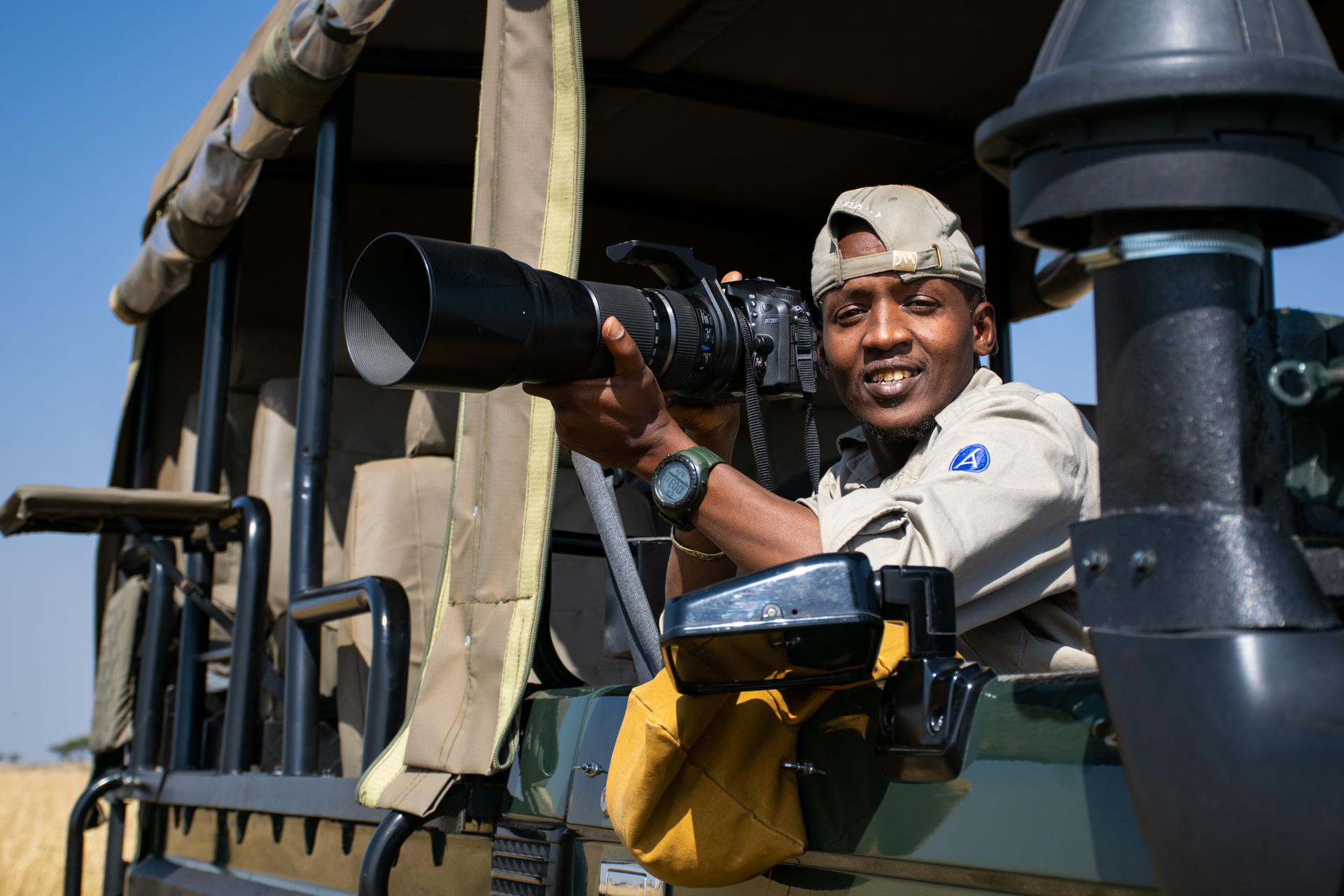
Ericson Lemaalo
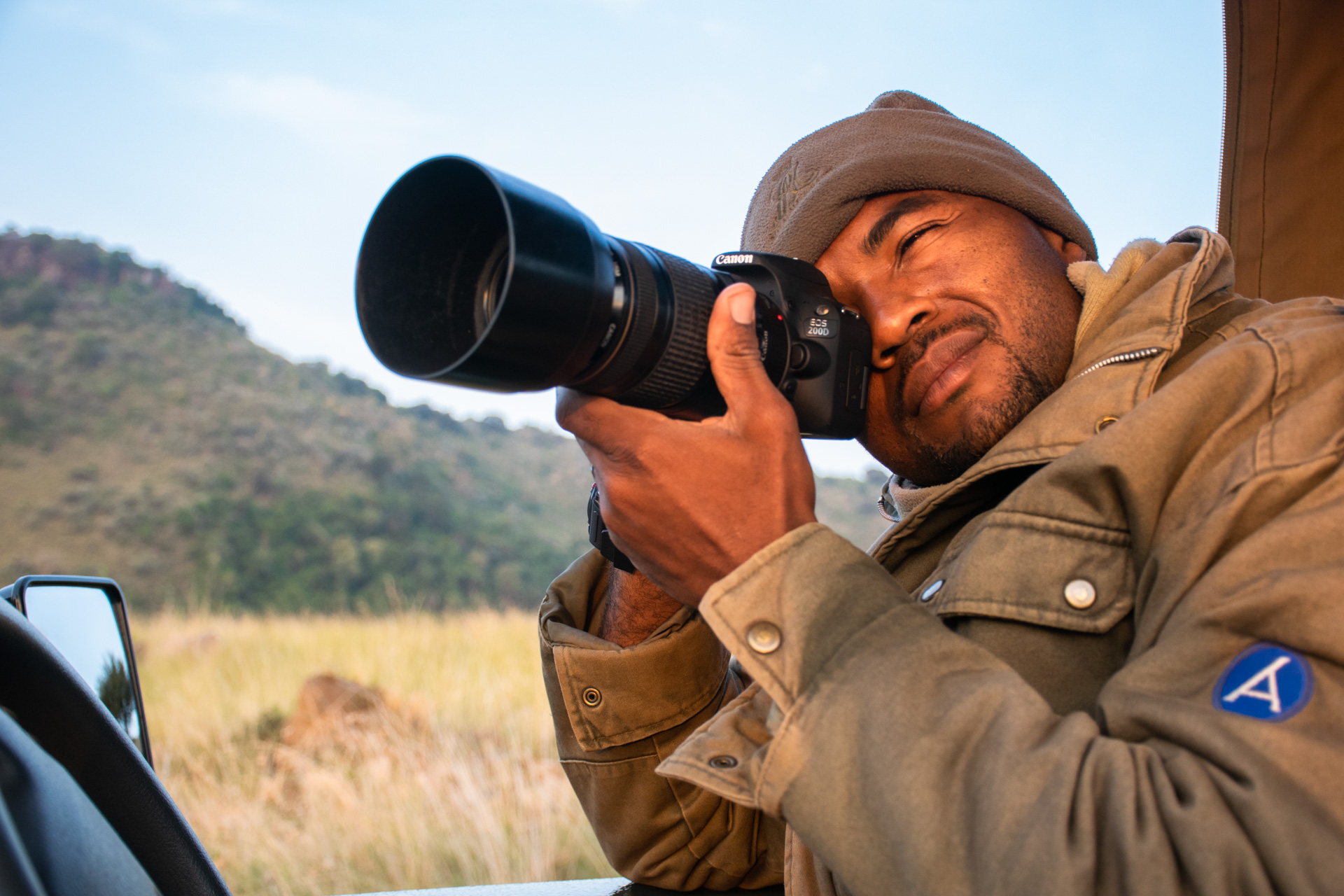
Douglas Onsongo
During the practical sessions, we focused our efforts on shooting in Aperture Priority as well as editing using Lightroom back in the studio. [f 6.3, 1/800, ISO 200]
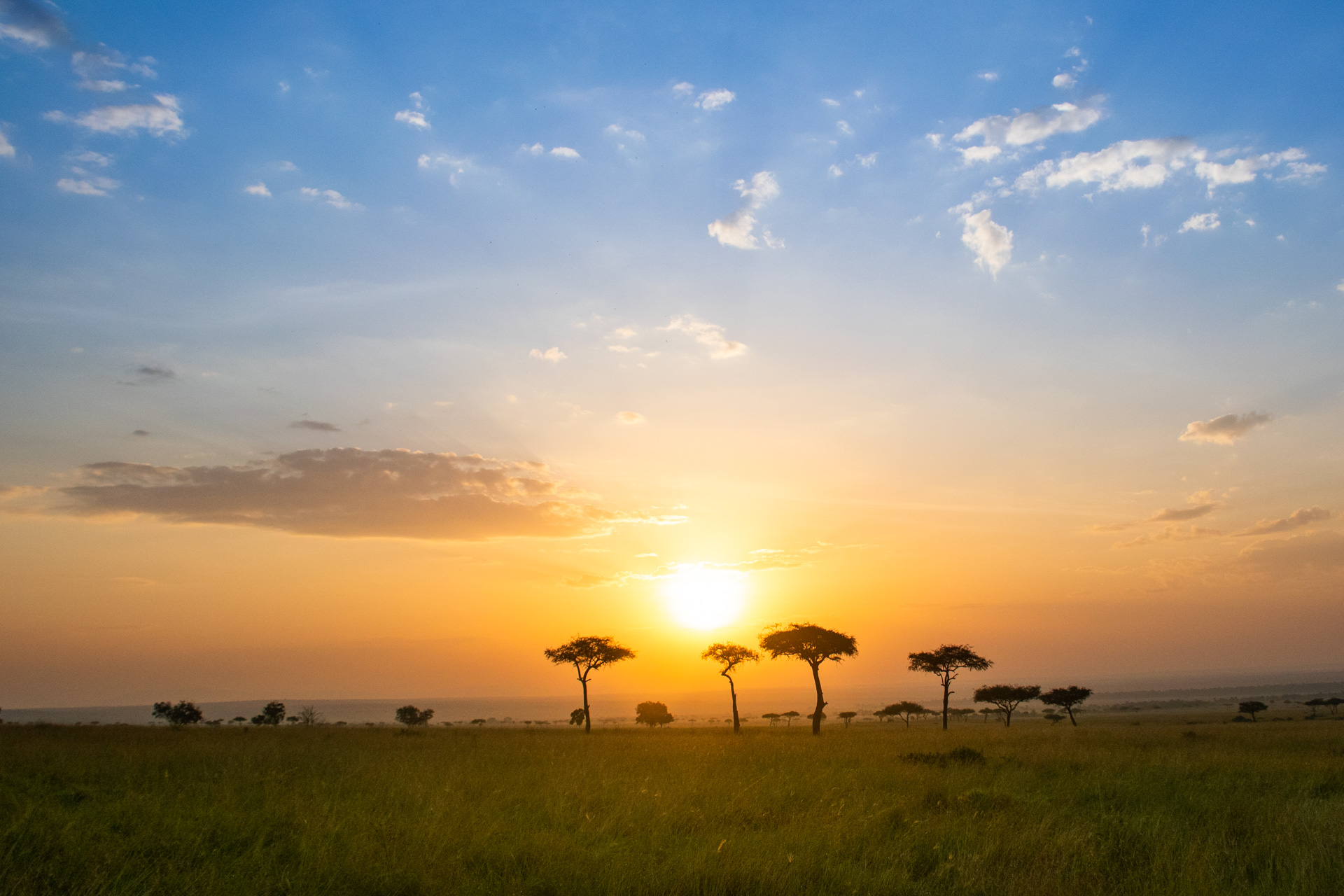
To qualify for their practical classes, both Dougie and Lemaalo had to go through in-depth theoretical sessions. As fun as the theory is, it pales in comparison to being out in the field with camera in hand. [f 3.5, 1/4000, ISO 400 +0.67]
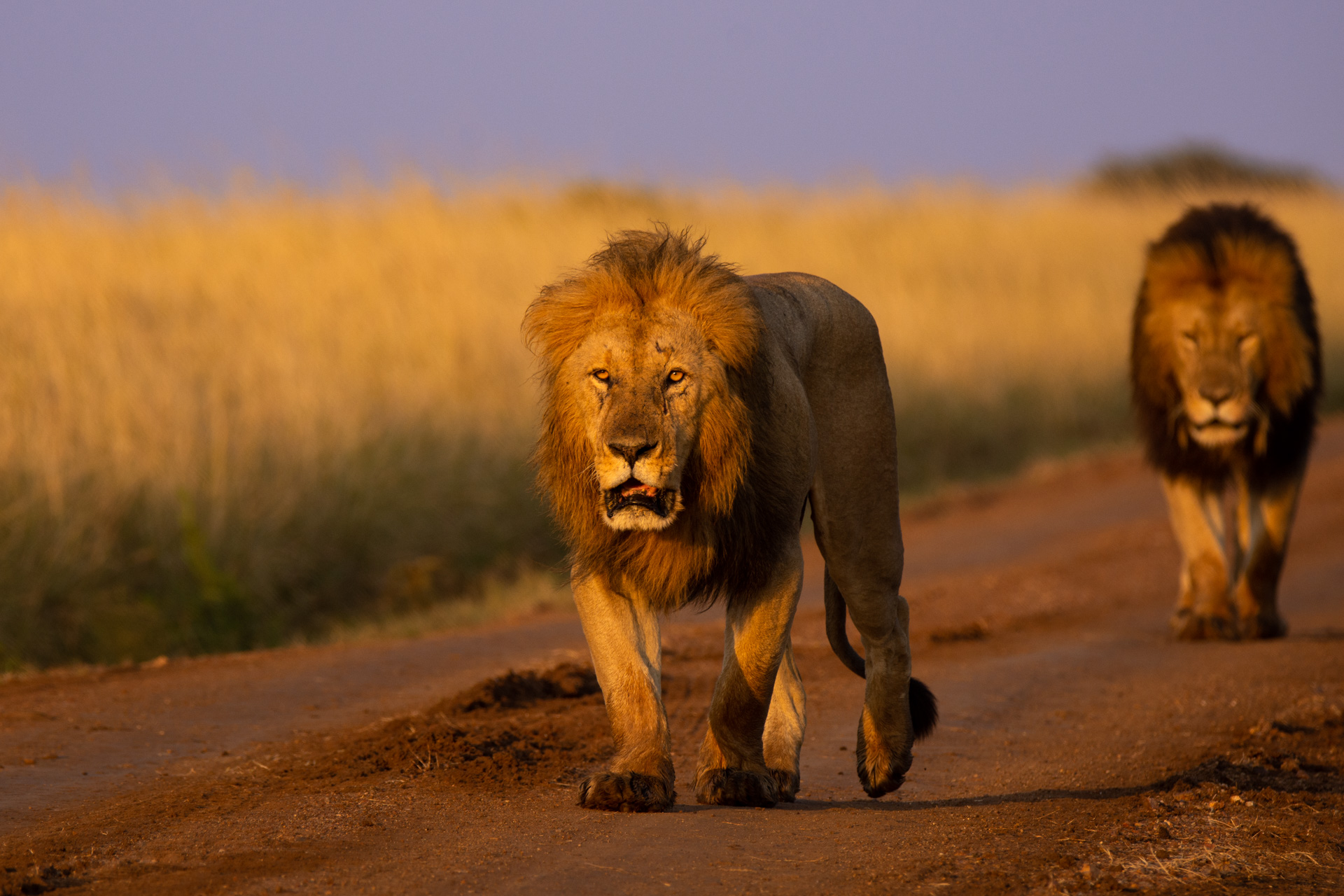
These classes begin at first light. I’ve said it before and I’ll say it again: getting up early always pays off. This week was no different as we were fortunate to come across these two big male lions walking straight down the road. [f 6.0, 1/400, ISO 250 -0.67]
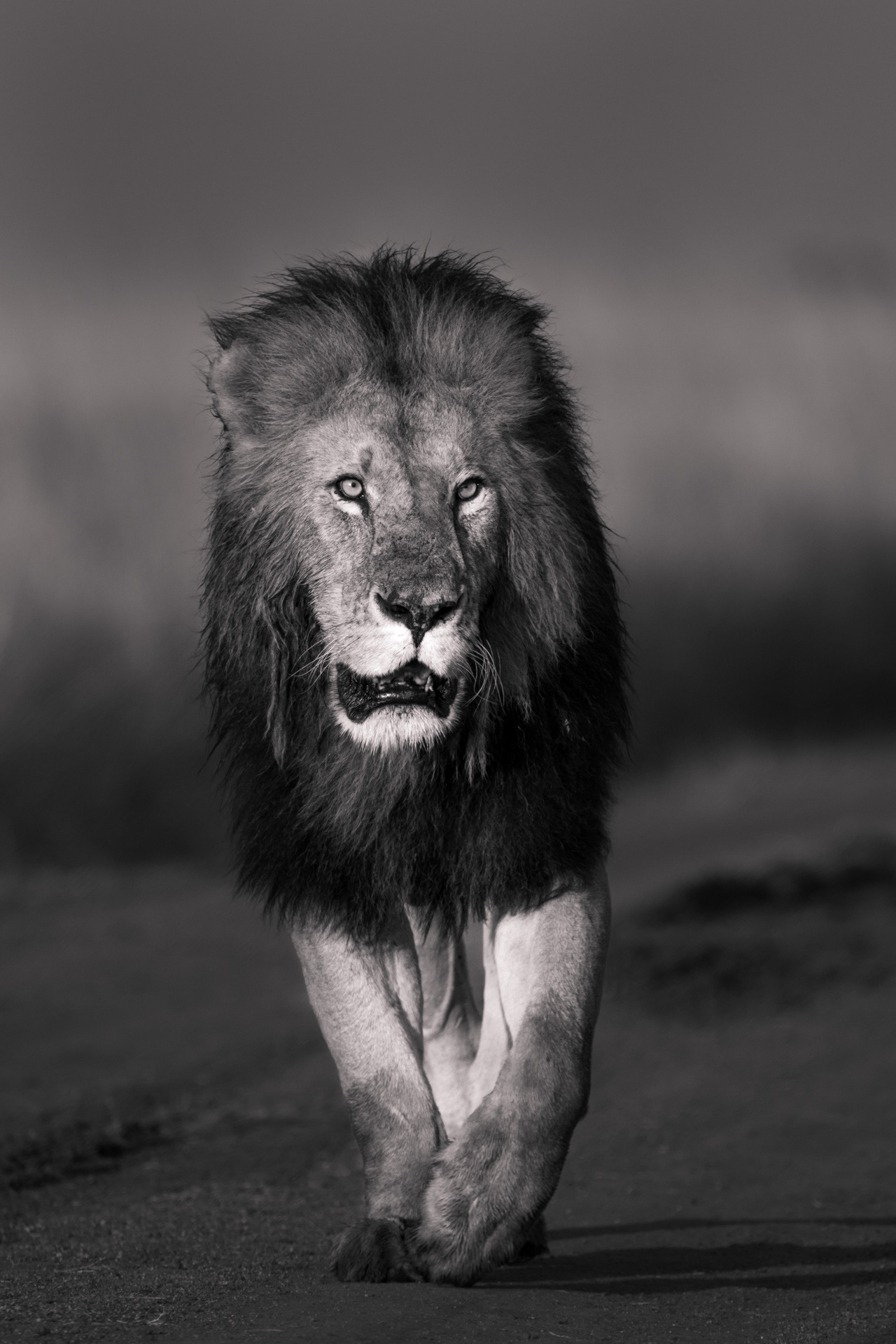
Photograph by Lemaalo
The most natural way of taking photographs is to hold the camera with a landscape orientation. However, this isn’t always the best option. I noticed Lemaalo shooting this scene in landscape and advised him to rather try shooting the single subject in portrait orientation. The results were fantastic. This image was initially taken in colour and converted to black and white in post-production. We used split-toning to change to warmer tones. [f 6.3, 1/400, ISO 250 -0.67]
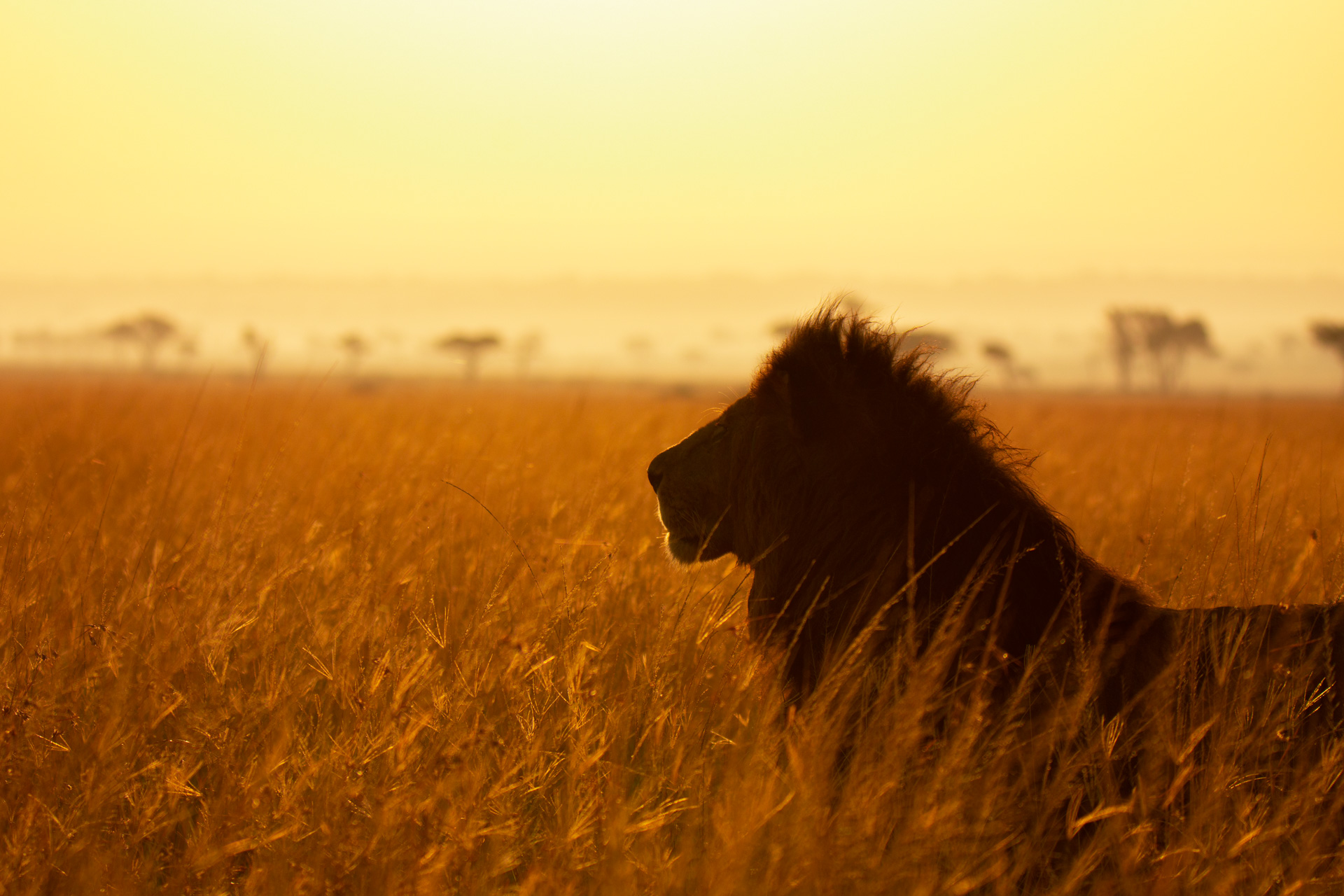
The lions left the road, moving into the longer grass. This gave us the opportunity to shoot against the sun – a technique that can be difficult to get right. It was already too bright to get ‘rim light’ and also too harsh to take proper silhouette shots. So instead, we worked with what we had and added a bit of colour in post-production. [f 5.0, 1/1250, ISO 250]
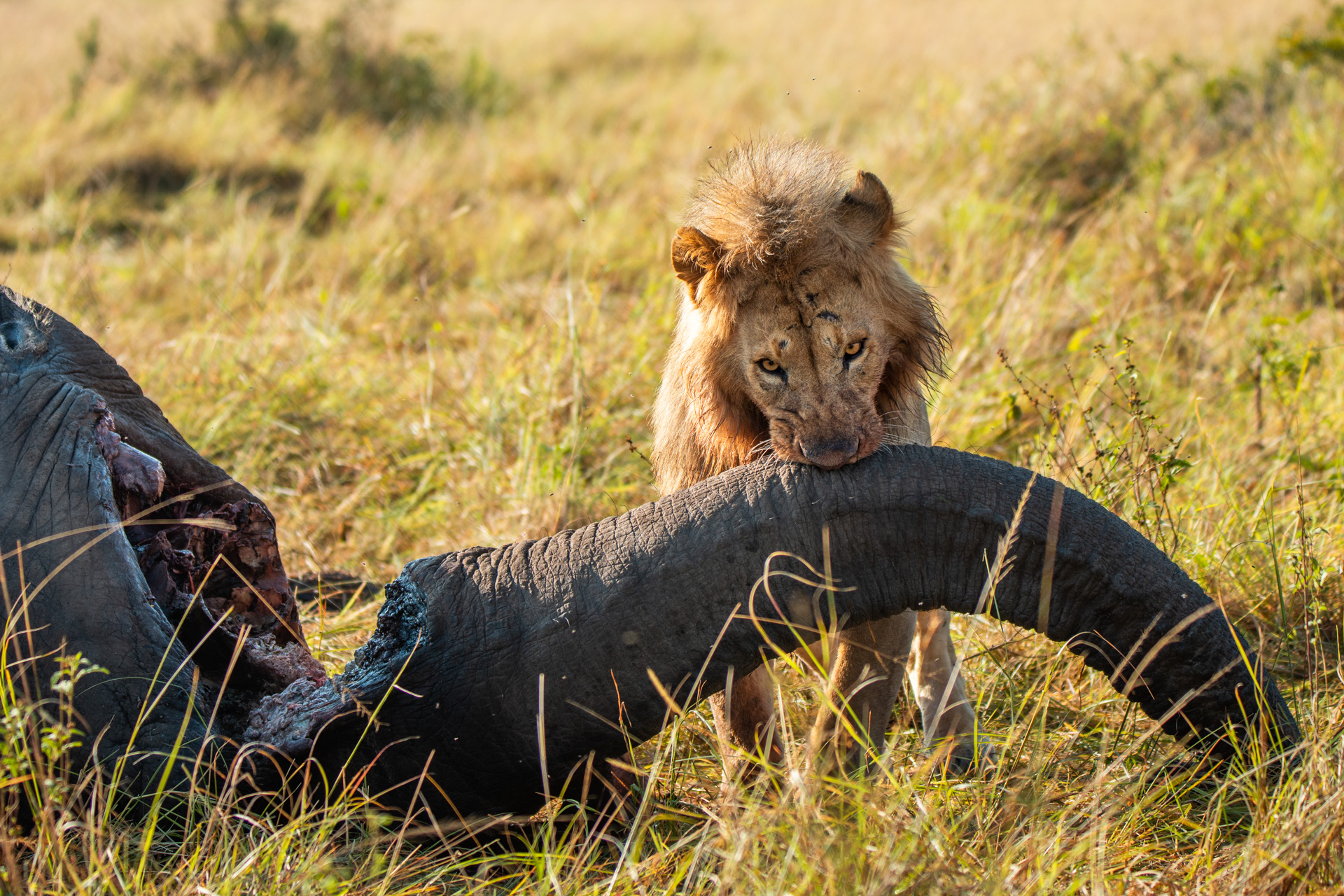
It was tragic to lose one of the Mara’s huge bull elephants to human/wildlife conflict last week. The lion, however, do not seem to share the same sentiment. Two young males have spent the better part of the week on the elephant carcass, gobbling up much as they could. The lighting for this shot was tough, the sun was directly behind our subject, meaning we had to over-compensate to get the shot, then re-adjust the exposure in post-production. [f 5.0, 1/640, ISO 200 +0.33]
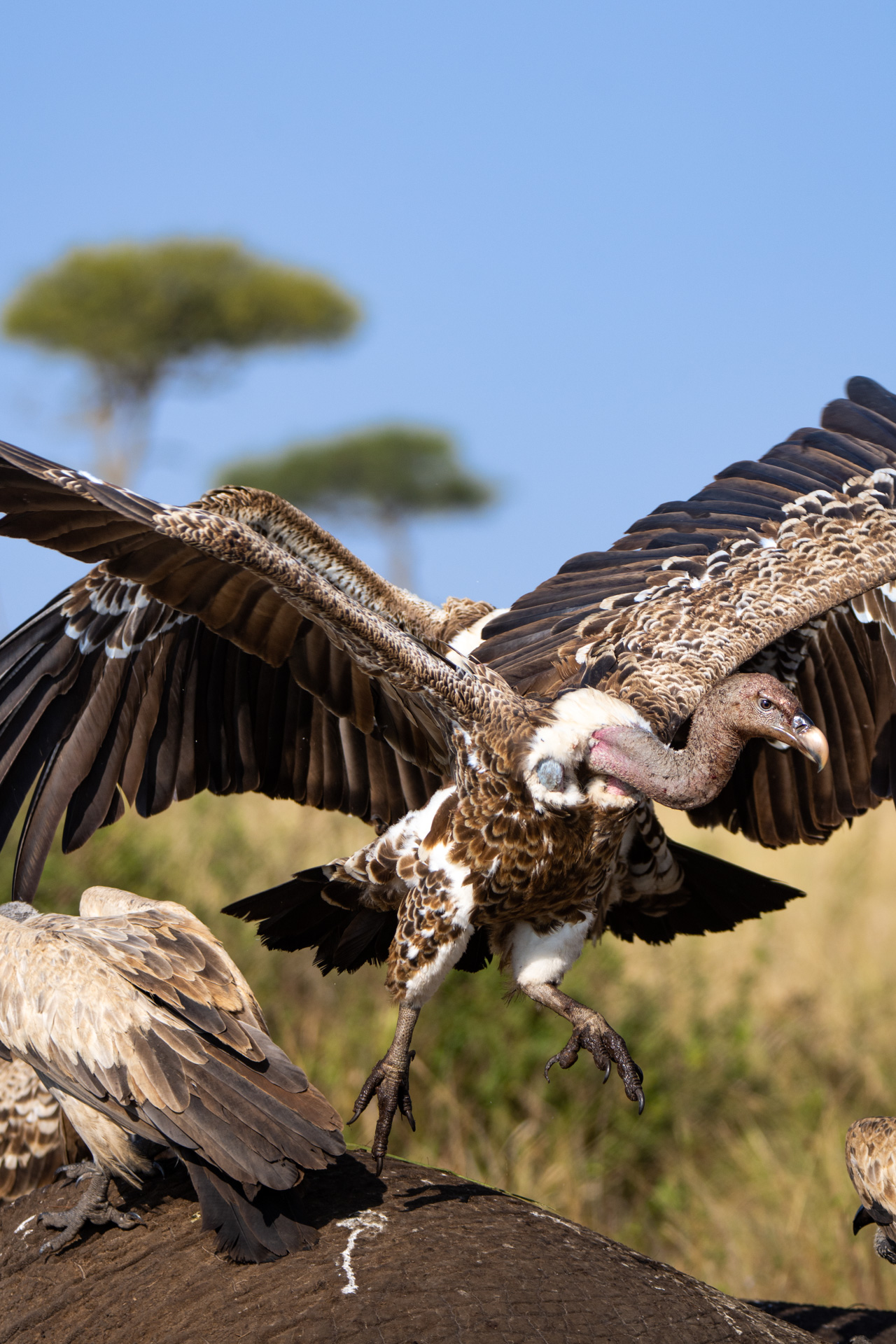
Days after the elephant died, its body began to decay. There was a large gathering of vultures, all trying to feed from the same area – total chaos. [f 5.6, 1/1000, ISO 200 -0.33]
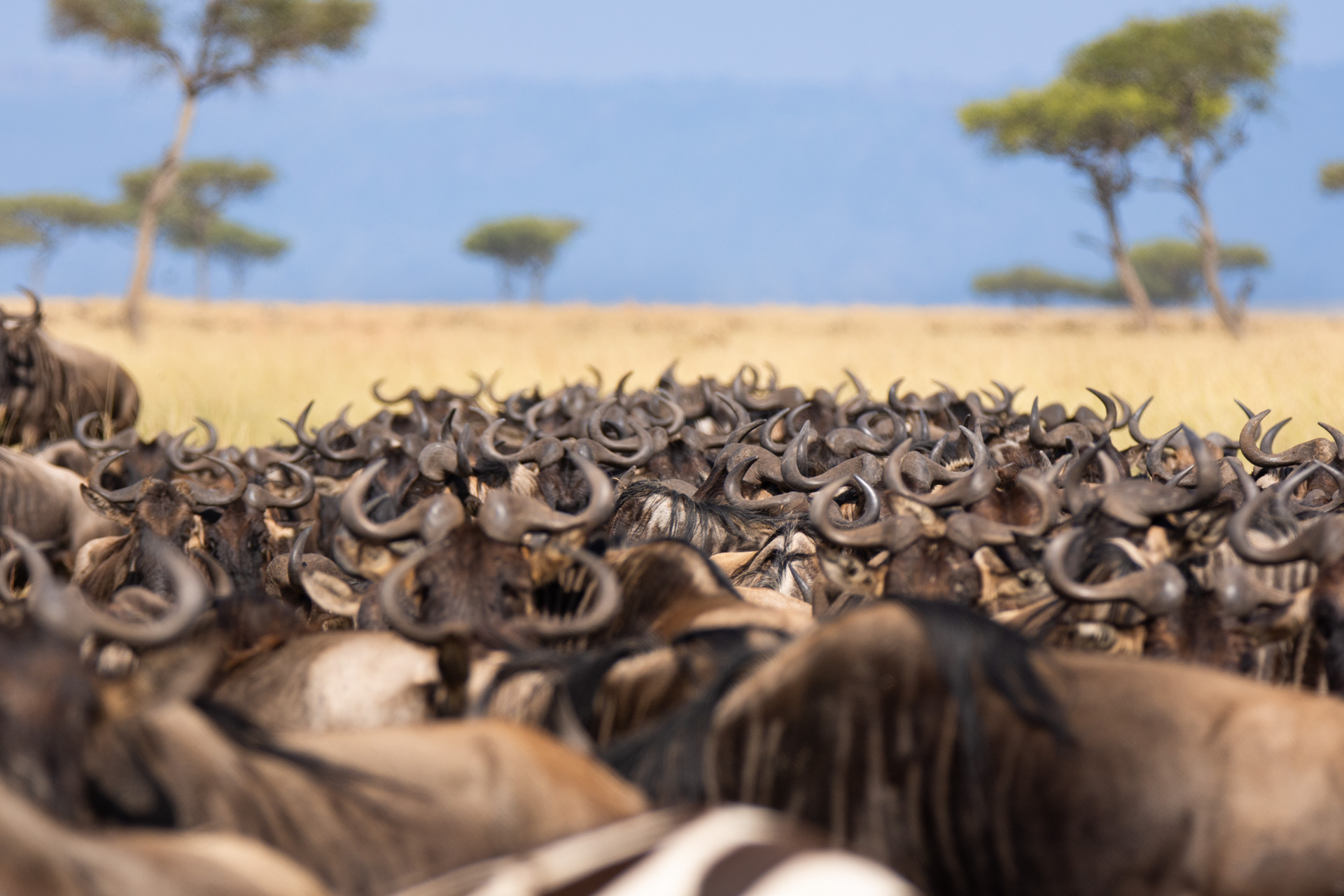
Masses of wildebeest are still scattered across the grasslands of the Mara Triangle. Late in the morning, the light can be harsh. A portion of our class focusses on making the most of these harsh, bright light conditions. Sometimes you have to get creative in the way you capture a subject. [f 5.6, 1/800, ISO 320 -0.33]
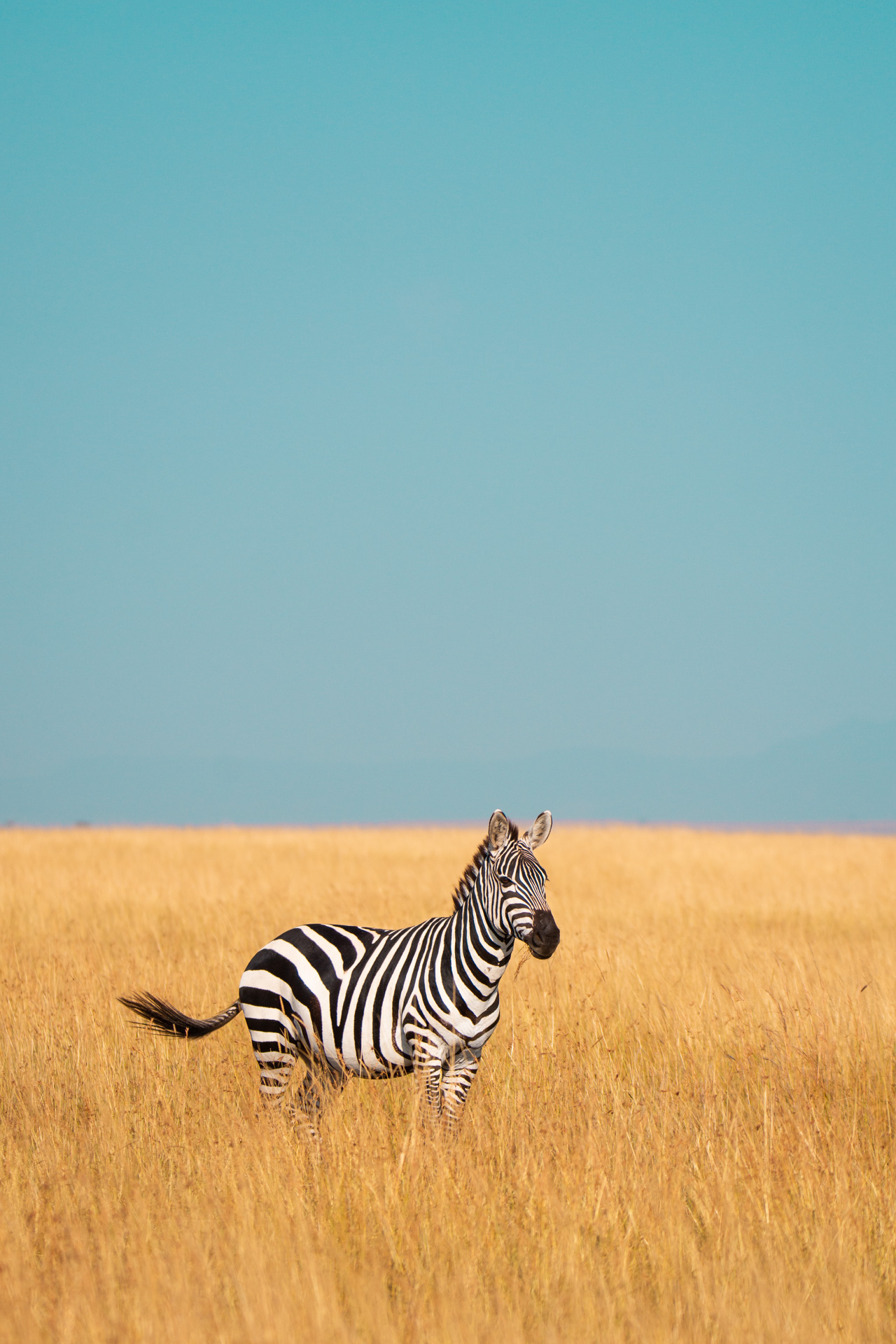
I wanted to show Dougie the importance of not just capturing great images, but also completing the process with editing. Here, I manipulated the colours to show the extremes one can go to when using Lightroom. [f 5.0, 1/1600, ISO 320]
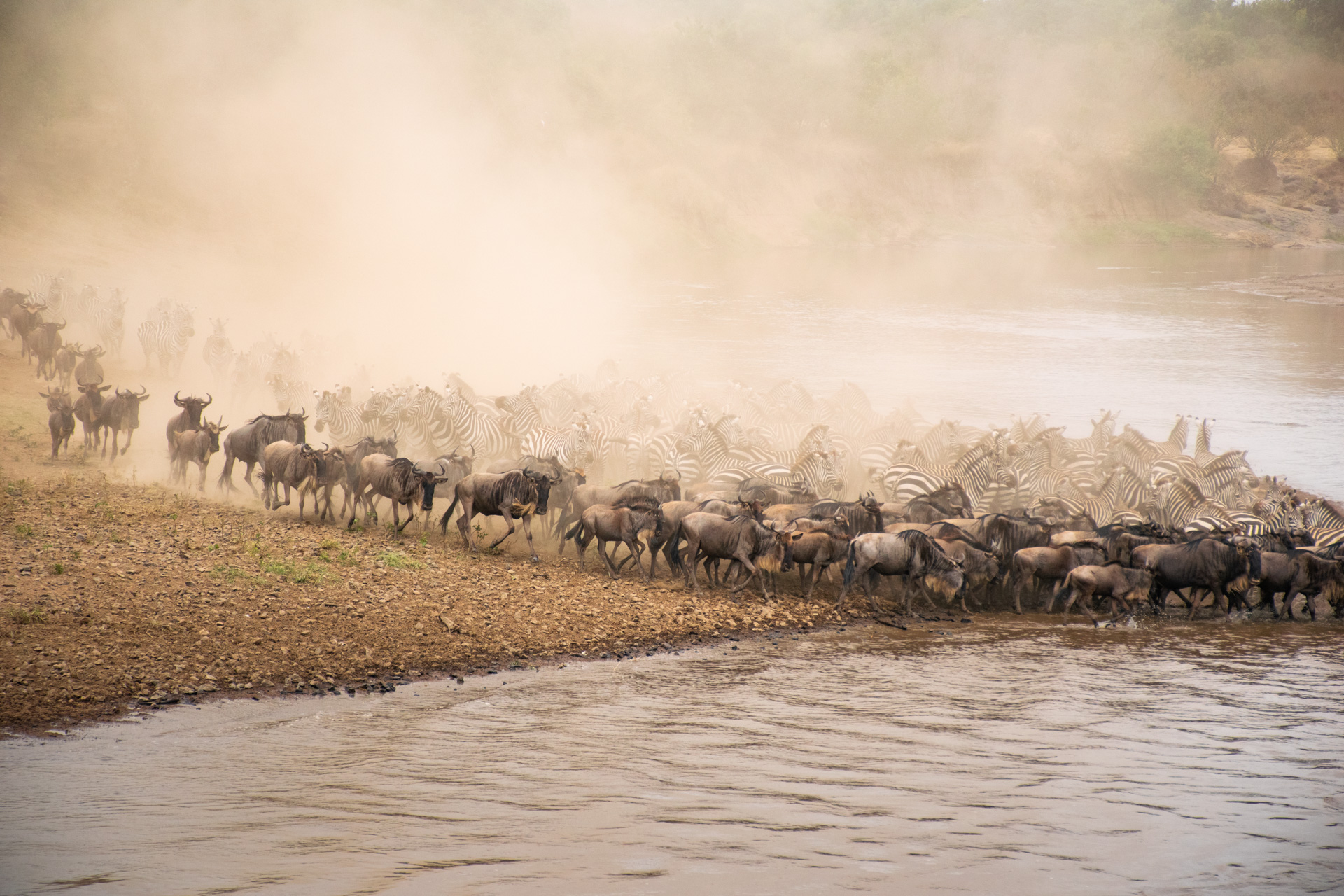
The chaotic river crossings are ongoing, taking place at different points along the river. These images were taken at the dusty, crocodile infected ‘cul-de-sac’ crossing point. [f 5.6, 1/1600, ISO 400]

Shooting in relatively high ISOs in Aperture Priority mode, allows for faster shutter speeds to capture and freeze the motion. [f 5.0, 1/1250, ISO 320]
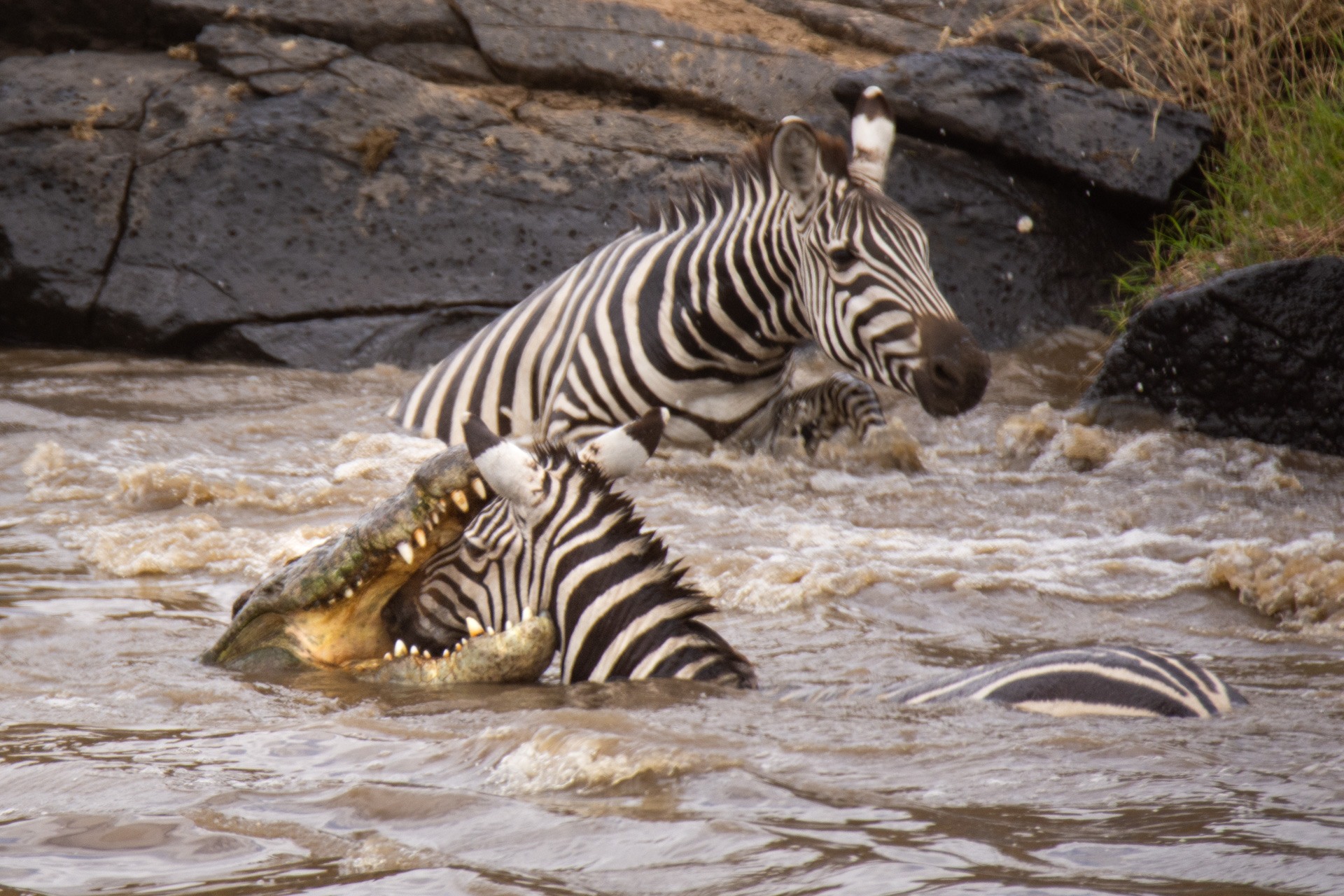
One of the greatest challenges about river crossings is knowing where to look. There is so much going on at once that it is very easy to miss a crocodile kill or lion hunt while focusing on the action elsewhere. I very nearly missed this shot; in fact, I barely got it. A closer look will reveal that it is not in perfect focus. [f 6.3, 1/800, ISO 320]
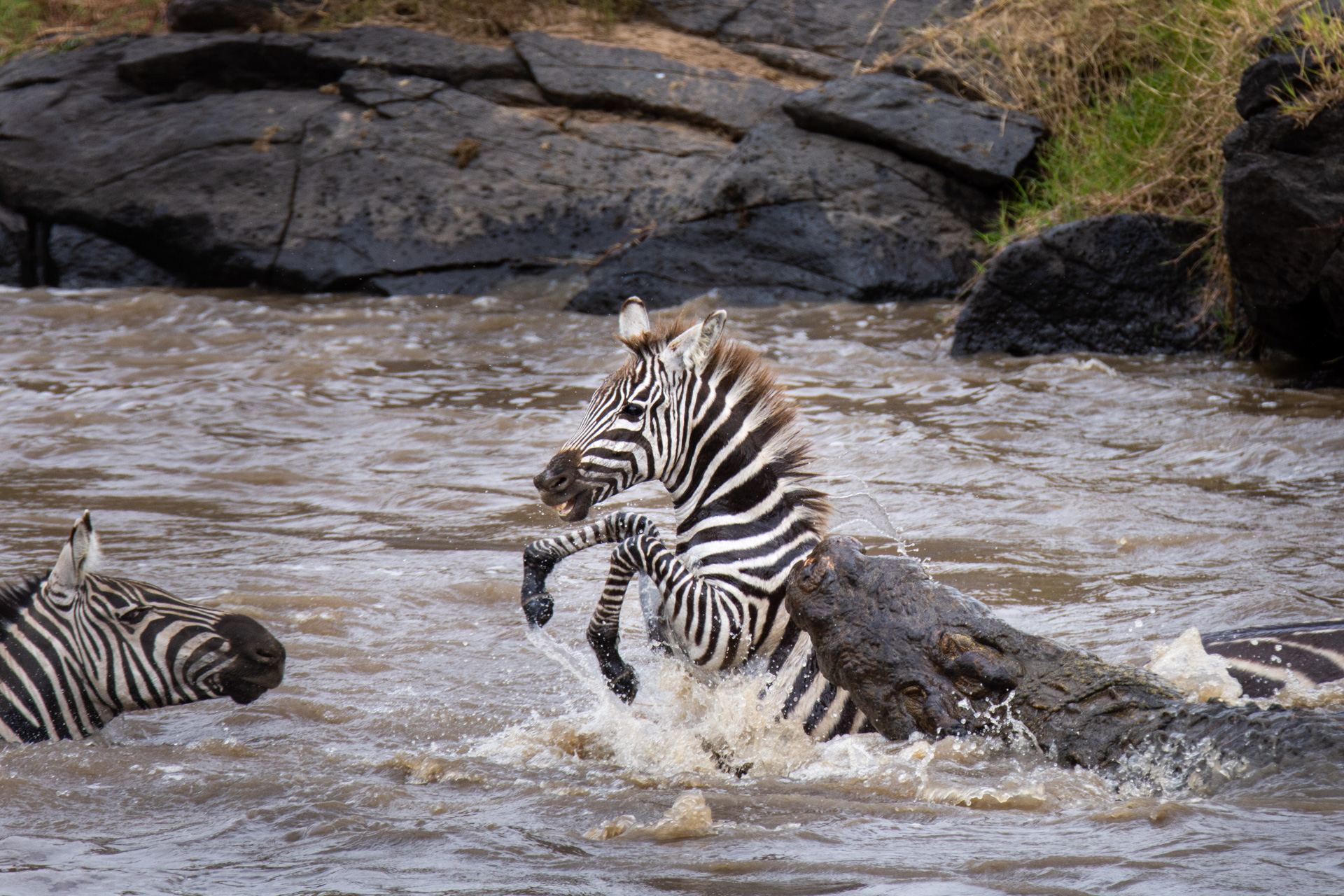
A close call. Looking at this picture, it’s hard to believe that this zebra calf didn’t get caught in those deadly jaws. [f 6.0, 1/1000, ISO 400]

It’s a rollercoaster of emotions when the zebra and wildebeest run the gauntlet of the Mara River. This young wildebeest calf had successfully managed to cross when it noticed its mother was still on the other side. Almost without hesitation, the calf dived back into the water to swim back. A gigantic crocodile, who had missed out on the earlier crossing, moved in at speed. This time the crocodile got his approach right – he drowned the calf and left the watching crowd completely distraught. [f 6.0, 1/800, ISO 400]

[f 6.0, 1/800, ISO 400]

[f 6.3, 1/1600, ISO 400]
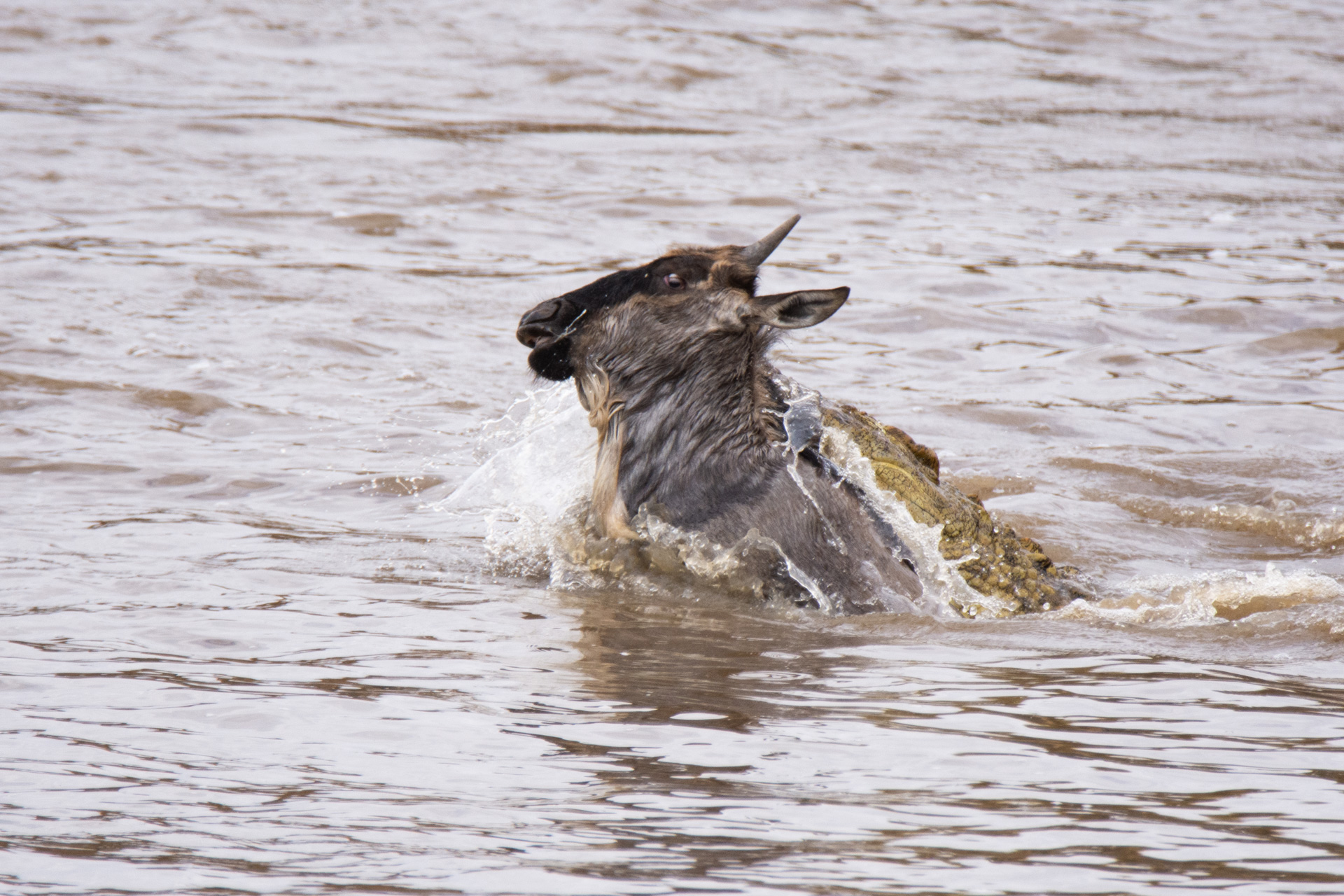
[f 6.3, 1/1250, ISO 400]

[f 6.3, 1/1600, ISO 400]
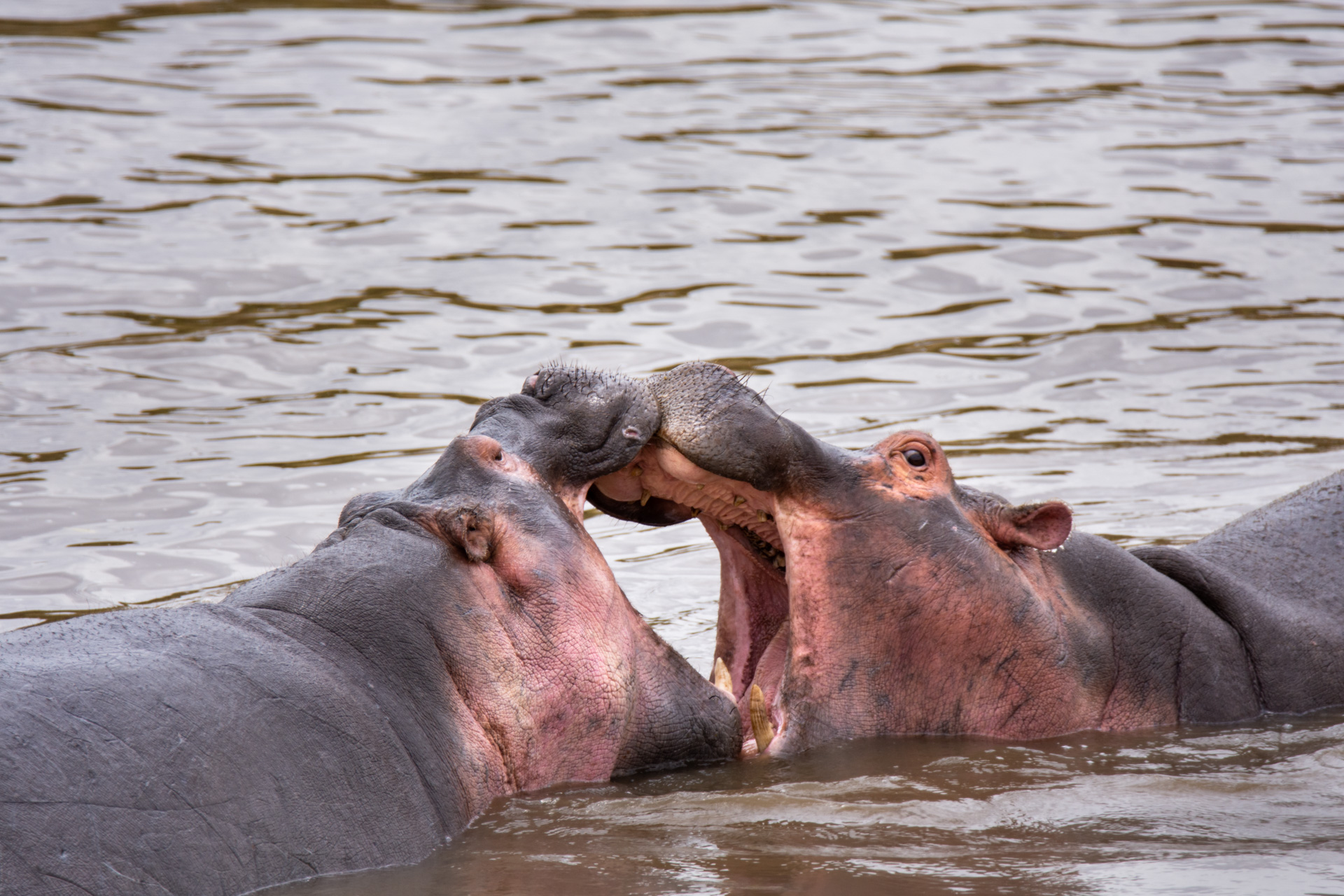
Meanwhile, in the middle of all this commotion, the hippo were calmly play-fighting. [f 6.3, 1/500 ISO 250]
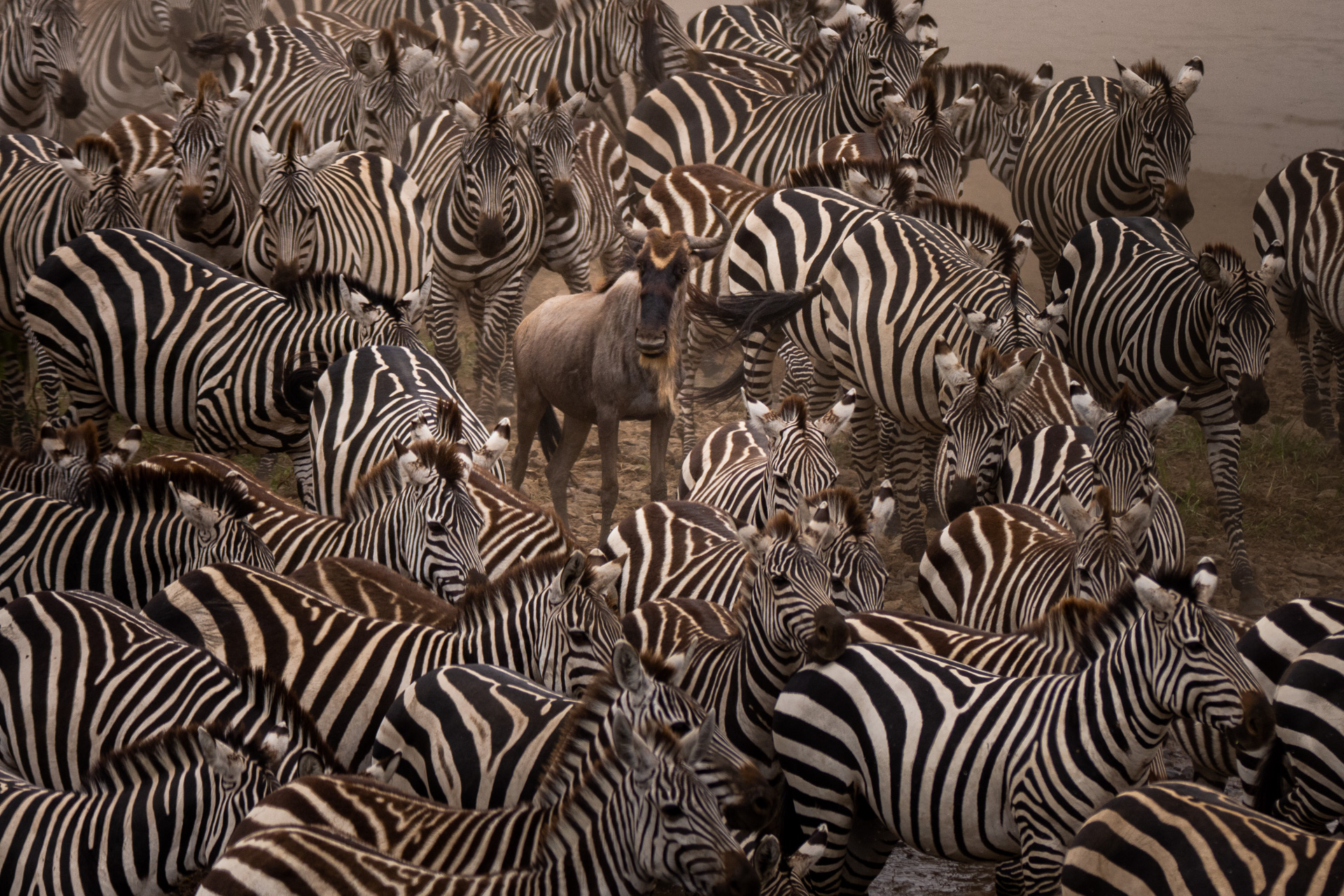
Isolated, in a sea of zebra. As photographers, we always need to be on the lookout for something that stands out and catches the eye. [f 5.6, 1/1600 ISO 320 -0.33]
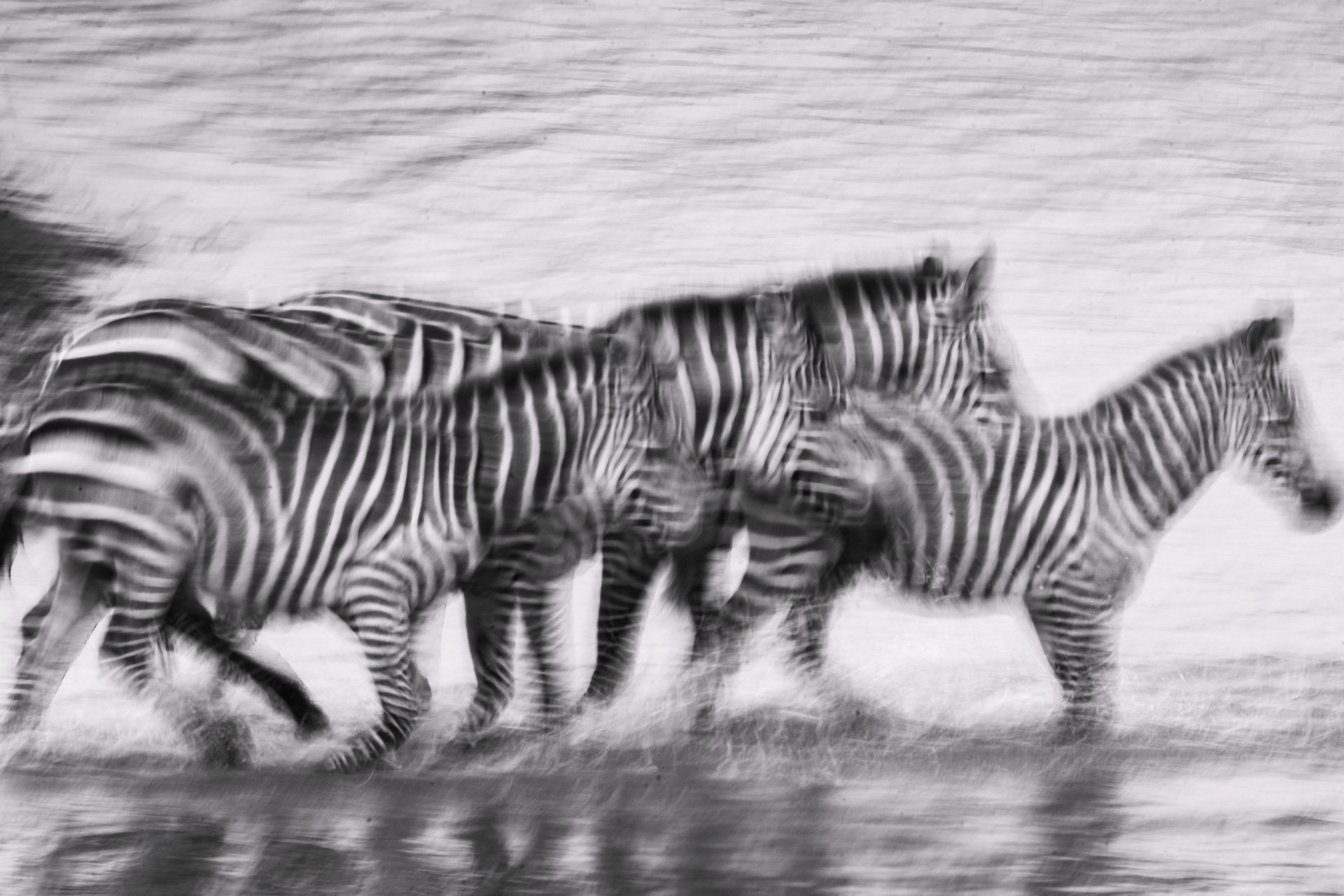
[f 40, 1/25 ISO 200]

Photography is an art form. One way of expressing this is to slow down the shutter speed and aim to showcase motion and blur. Of course, there’s a lot of deleting involved, but sometimes you may get something that is a little out of the ordinary. [f 32, 1/30 ISO 200 -0.33]
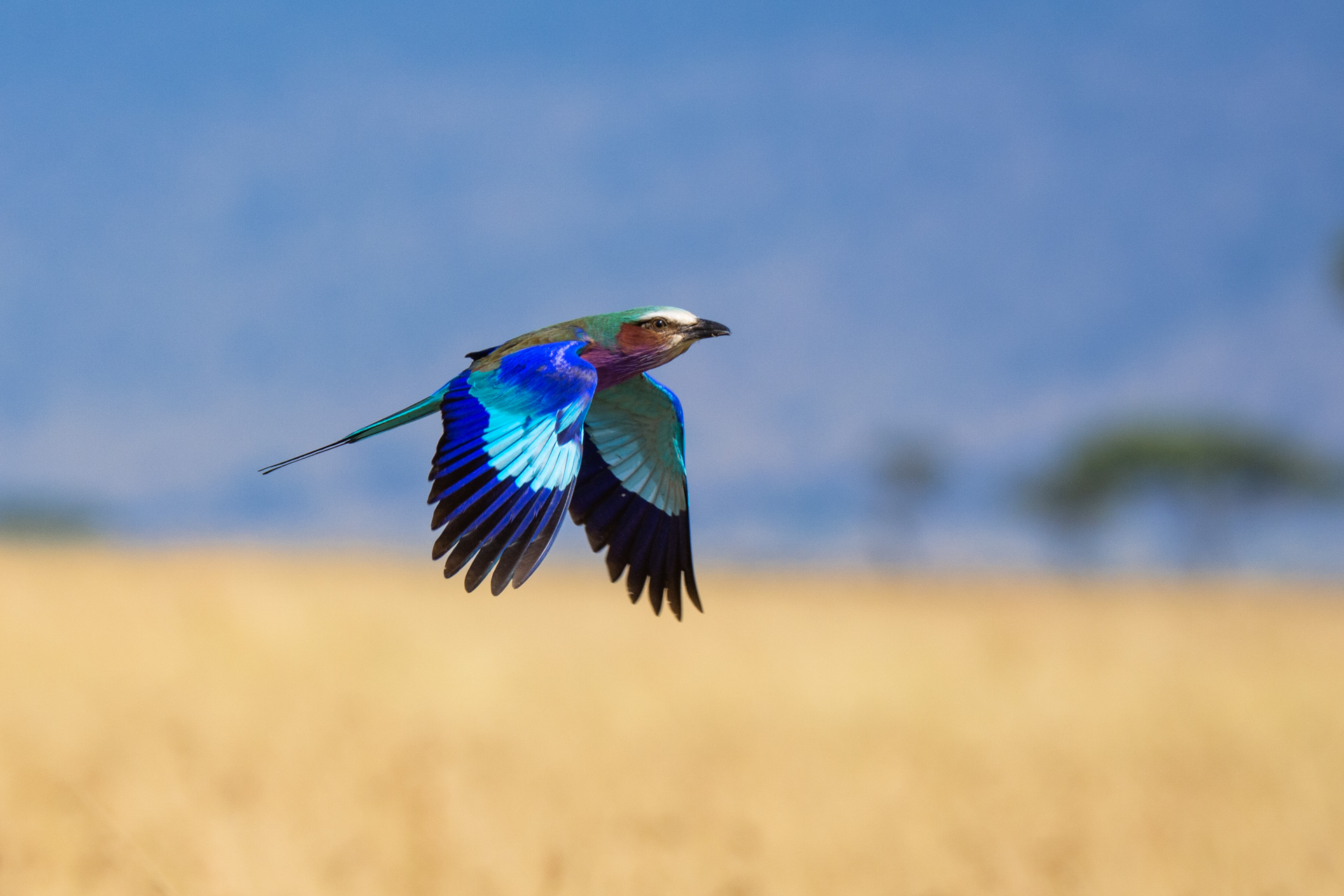
They say it is the most photographed bird in Africa, and so it is crucial that as guides, Dougie and Lemaalo are able to photograph them well. The lilac-breasted roller – one of the most beautiful birds in the Mara. This is one of the best flying shots I have ever managed to capture. A little trick here was to be zoomed out and then to crop in later during editing. [f 5.6, 1/1600, ISO 200 -0.33]
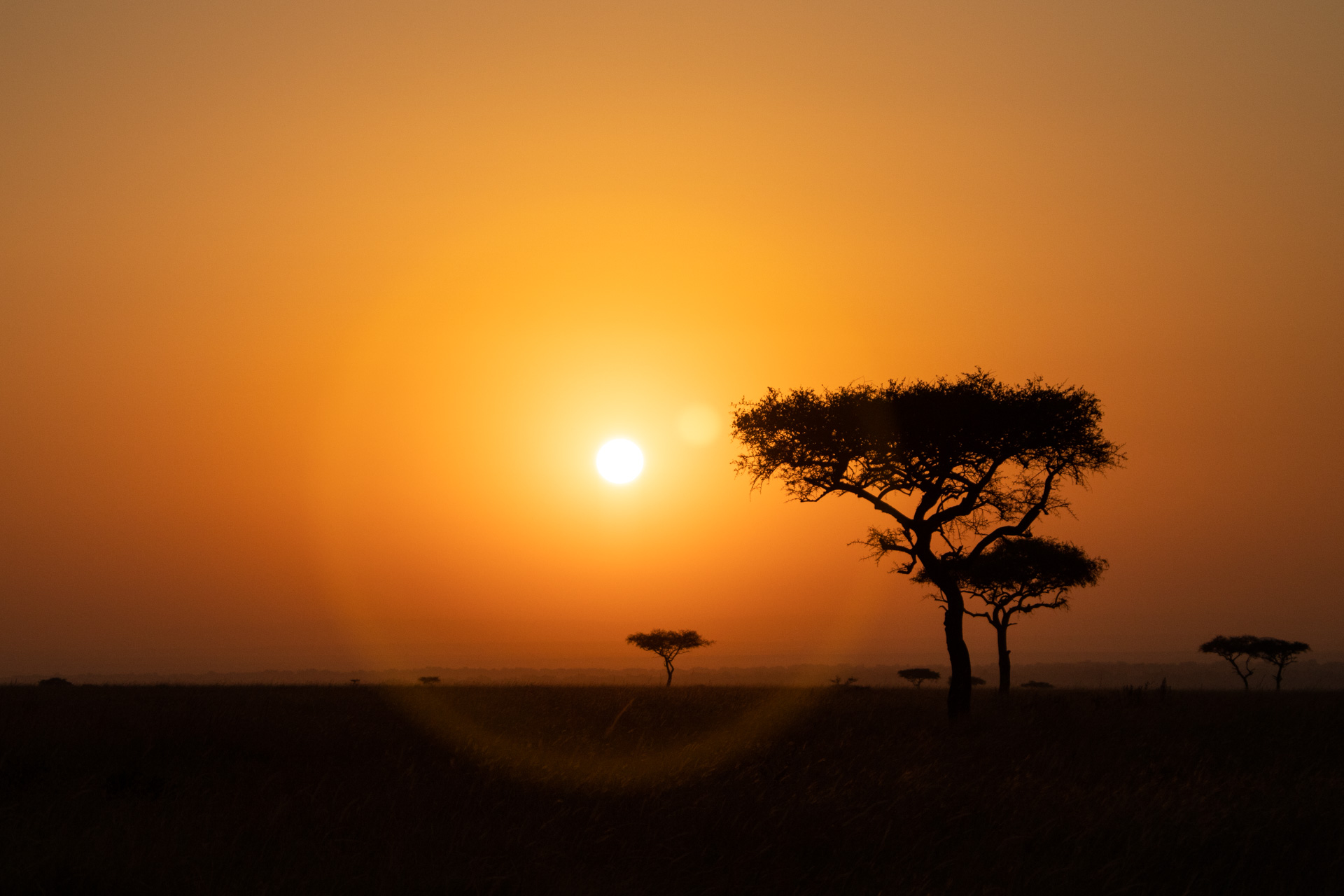
Photograph by Lemaalo. [f 5.6, 1/4000 ISO 400 -0.33]
This was Lemaalo’s first time out with a ‘real’ camera. The above and below images are two of my favourite shots from his first practical class – he is a quick learner.
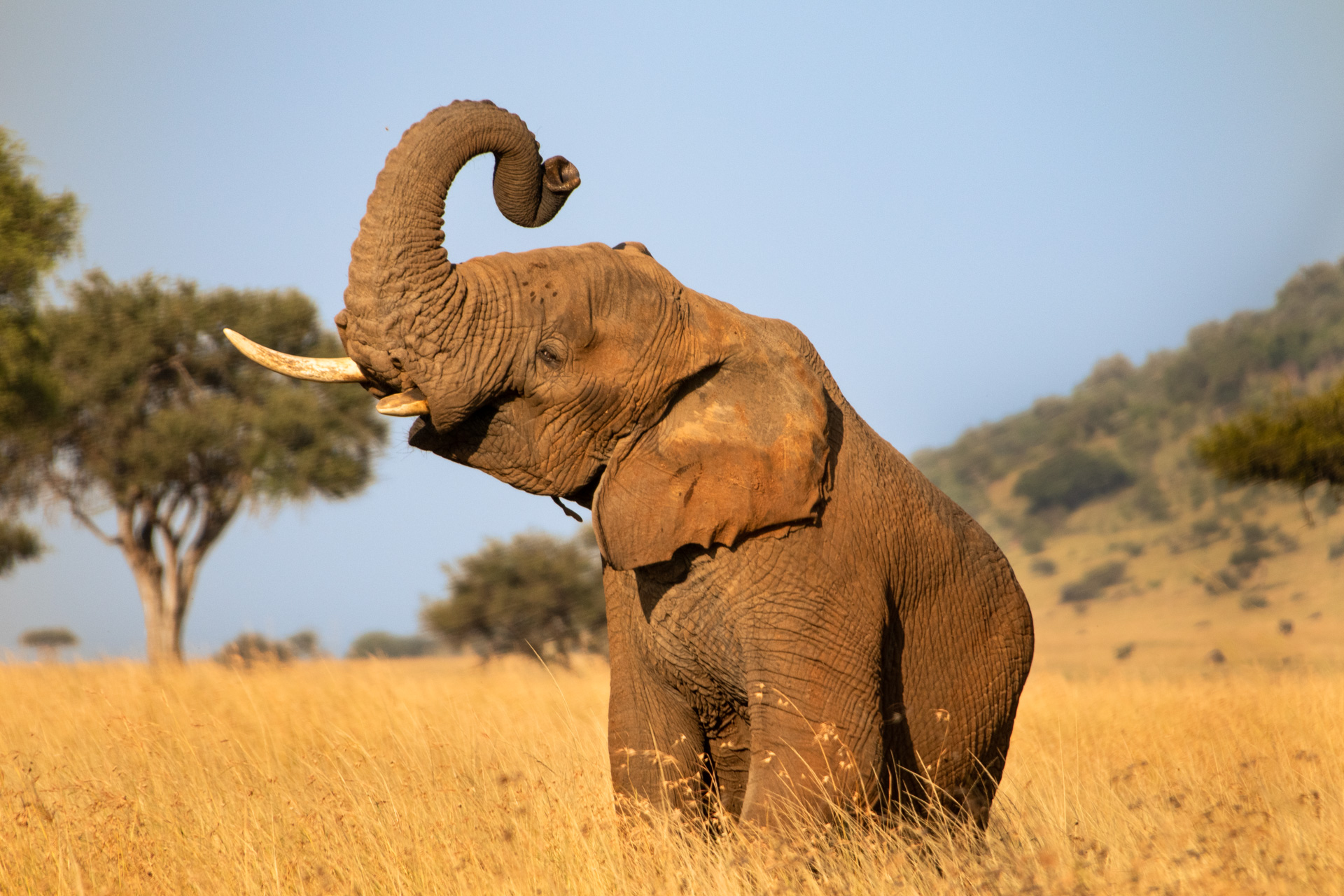
Photograph by Lemaalo. [f 5.6, 1/1250 ISO 320]
Dougie has been taking photographs for a few years now. He will soon become the first to graduate from our photography programme. These below two images are my favourite of his from this week.
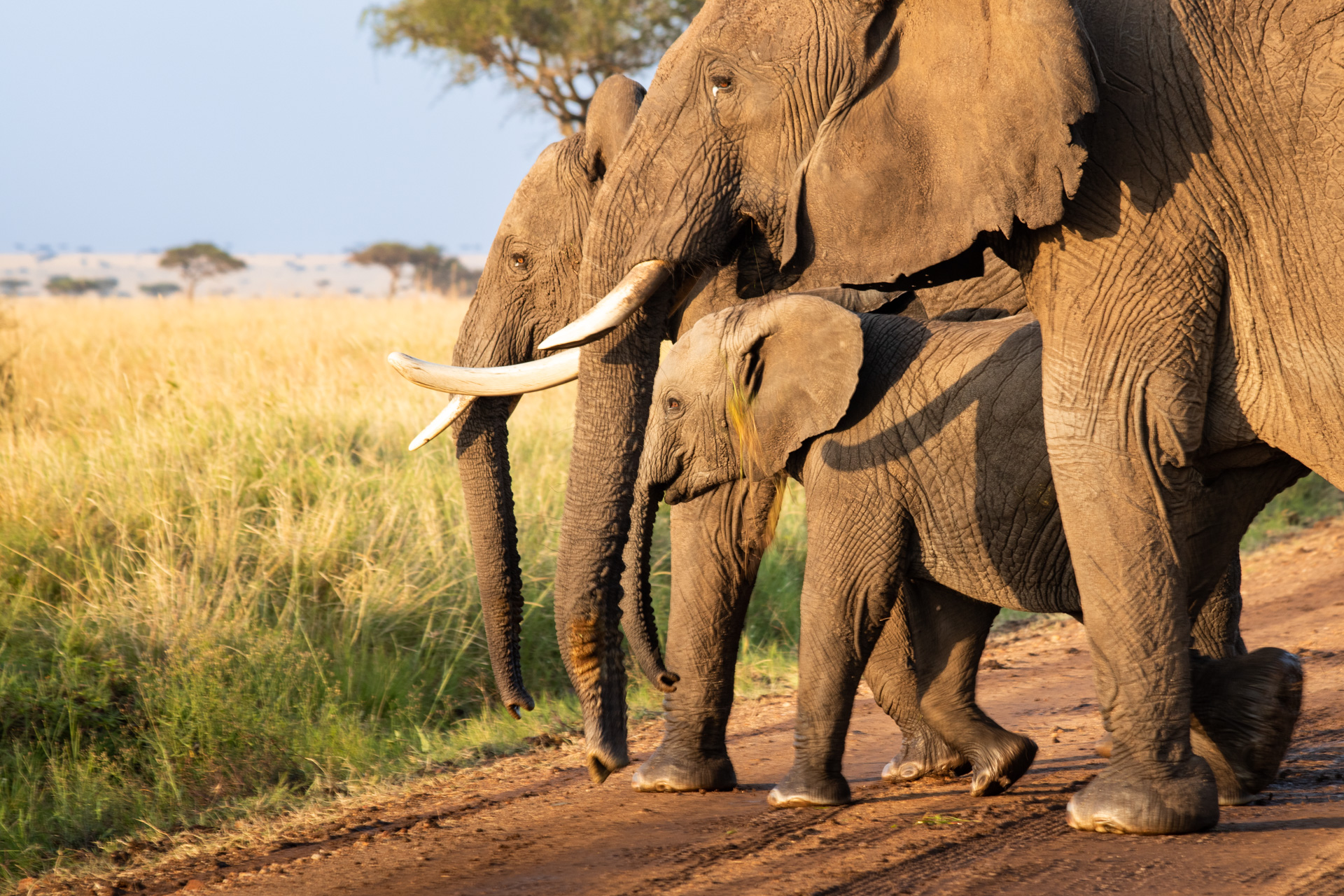
Photograph by Dougie. [f 8.0, 1/100 ISO 200]
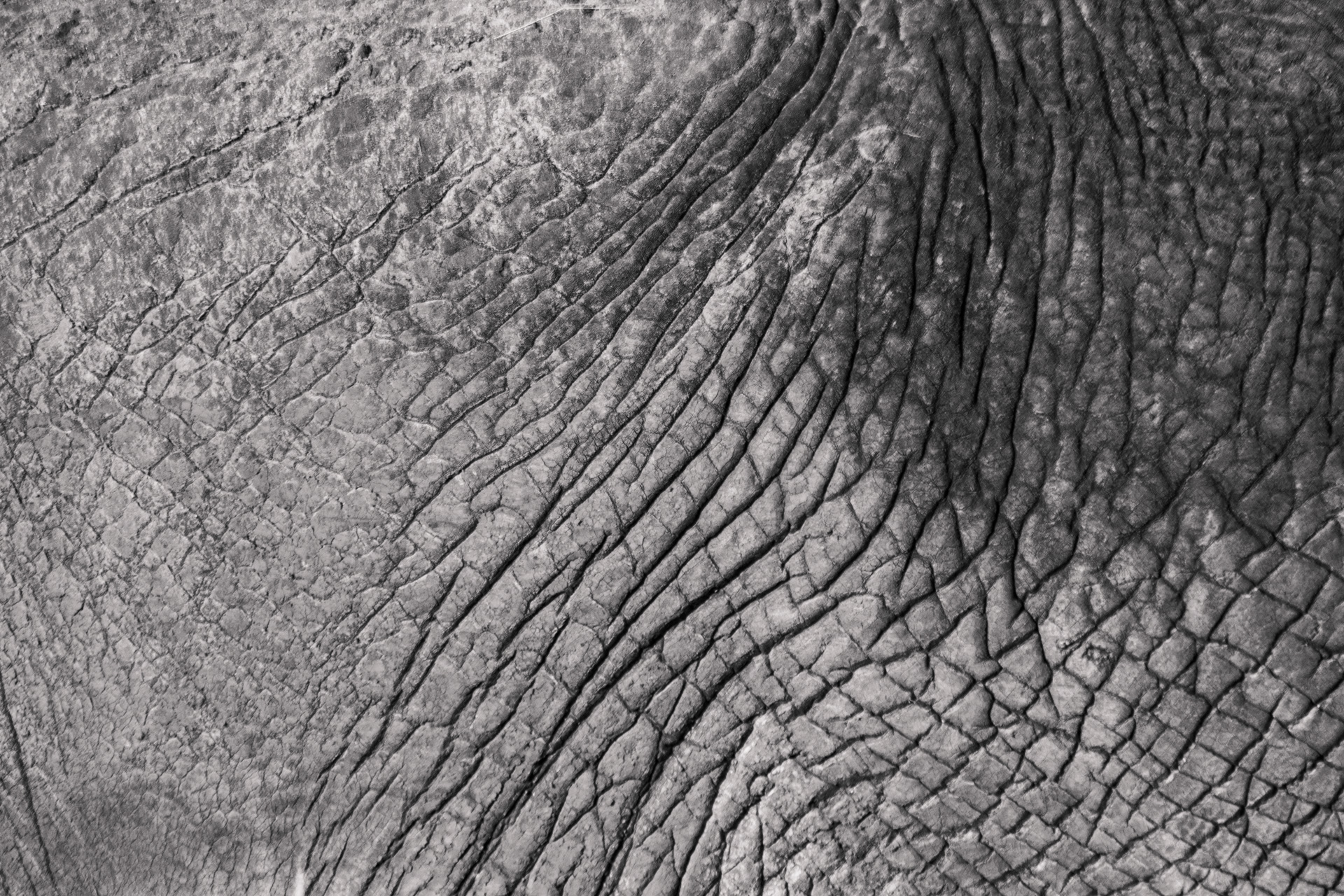
Photograph by Dougie. [f 5.6, 1/200 ISO 200]
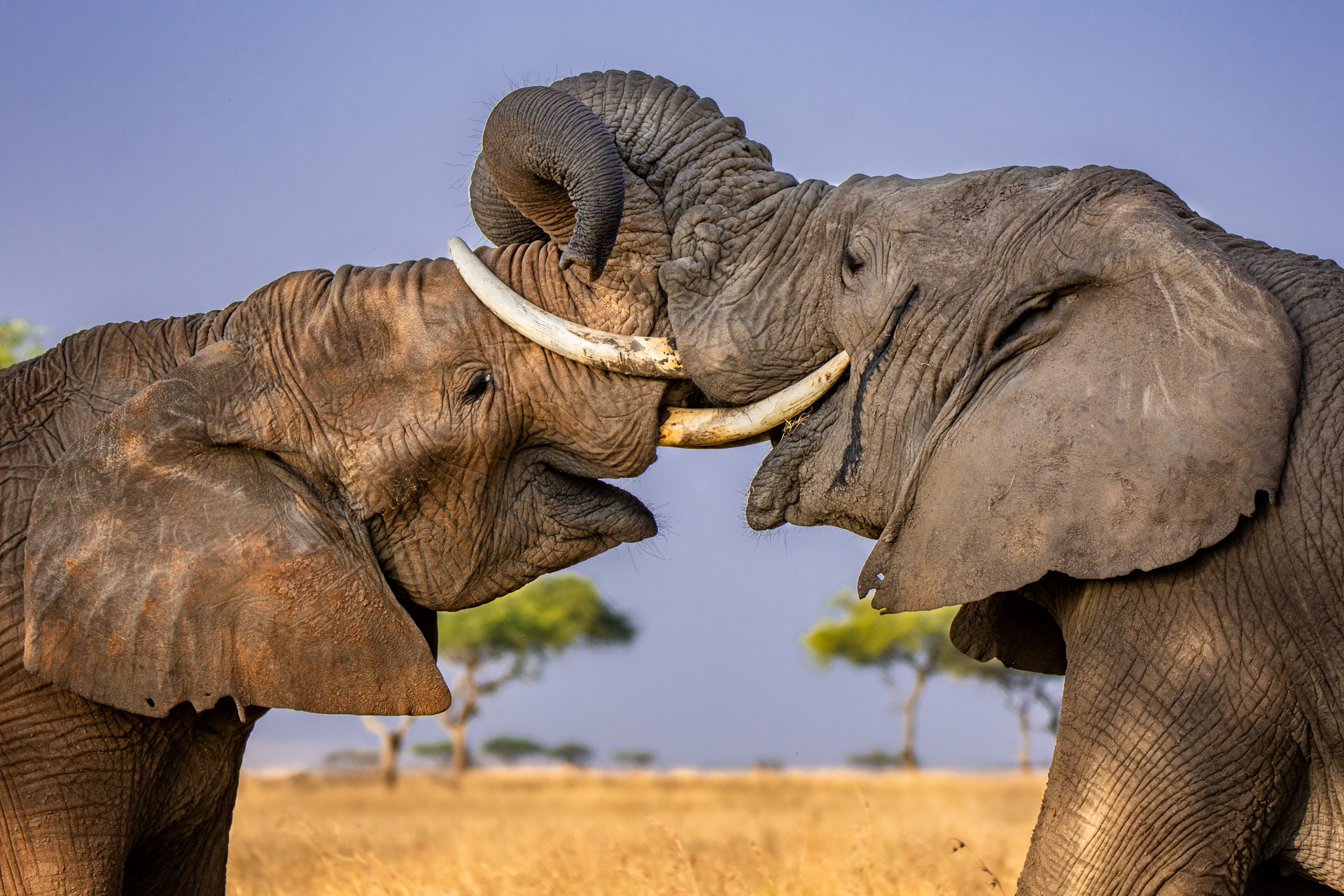
Without a doubt, this is my favourite shot of the week. I was up close and personal with these two giants – what a thrill! They were play-fighting under a tree and the shadows were making the lighting a challenge. I had to do a fair amount of editing to balance it all out, but am delighted with how it turned out. [f 5.3 1/640 ISO 250 +0.33]
THIS WEEK A YEAR AGO
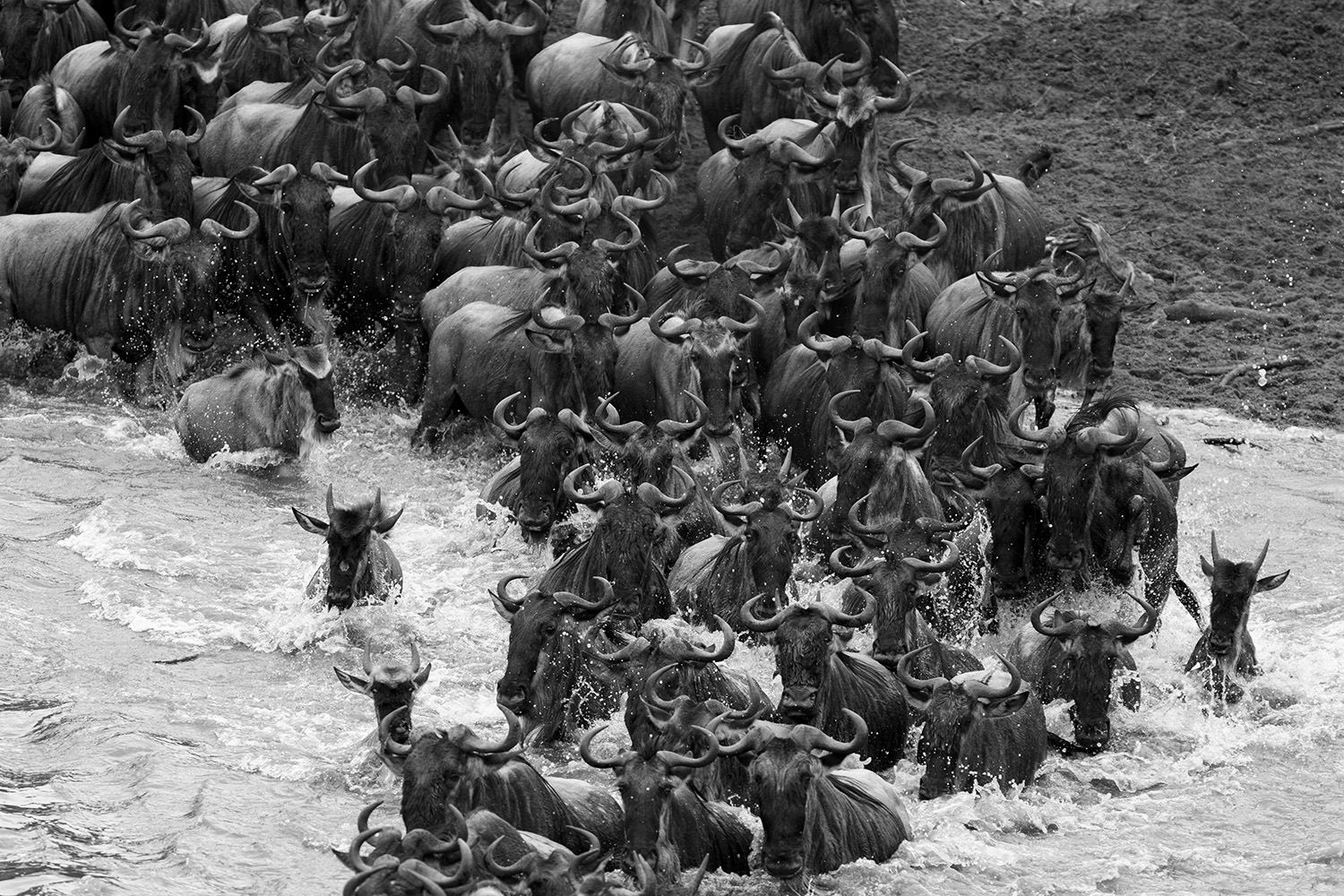
The Great Migration offers plenty of opportunity to play around with black and white conversions. [f 5.0, 1/500, ISO 800, +0.67] Photograph by Adam Bannister
TAGGED WITH: Photography, Angama Mara, Great Migration, Wildlife Photography, Photographic Safari, Bird Photography



COMMENTS (1)
VASANTHA JAYASOORIYA
September 2, 2019Lovely photographs. Makes you want to go out and start shooting!
REPLY